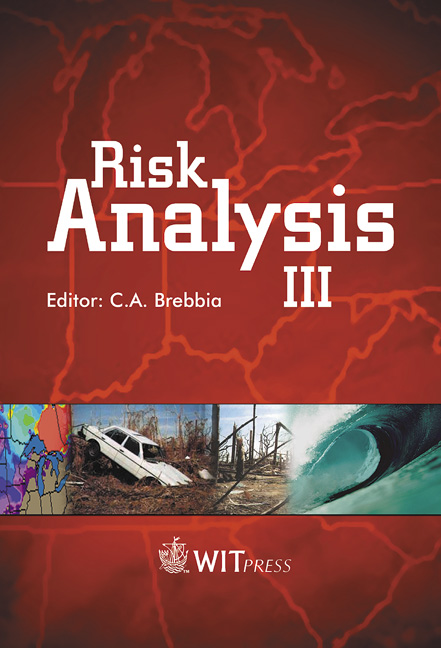The Development Of A New Holistic Risk Assessment Model For The Inclusion Of Public Perceptual Values In The Decision-making Process
Price
Free (open access)
Transaction
Volume
31
Pages
Published
2002
Size
600 kb
Paper DOI
10.2495/RISK020171
Copyright
WIT Press
Author(s)
P. E. S. Chesney, G. L. Cannibal & R. Baines
Abstract
The development of a new holistic risk assessment model for the inclusion of public perceptual values in the decision-making process P. E. S. Chesney1, G. L. Cannibal1 & R. Baines2 1 School of Environmental and Applied Sciences 2 School of Computing and Technology, University of Derby, England. Abstract A new model of risk assessment is proposed as a debating tool in an ongoing interdisciplinary dialogue with wider society. Subjective value perceptions are incorporated in to the risk model with acknowledgement to the inter-subjectivity and limitations of traditional rationalist approaches. The basis of the model is the incorporation of subjective perceptual values into the appropriate stage of the risk management process i.e. that which will facilitate the proactive assessment of the risk and the prevention of societal outrage and opposition to the proposed development project or policy. All too often the public's perceptual values are only recognised when a crisis has already materialised, when public outrage is threatening the continuation or efficiency of the existing action, or when the developer or regulator wants to revive its already damaged reputation or image. The new risk epistemology moves away from the suppressive nature of the rationalist and objective paradigm by incorporating relevant social values and issues into the risk model at the very initiation of the identification, definition and assessment stages of the decision-making process. Thus enabling risk managers to proactively understand the concerns of the individuals, populations or stakeholders involved in the risk situation. The early recognition given to these social values will allow sufficient time for their concerns to be incorporated into and satisfied by the development proposal. By assessing risk in a way that reflects the values of holistic society, not just those of the experts, this will lead to the breaking of the two way opposition and distrust that often exists between the public and risk experts.
Keywords





